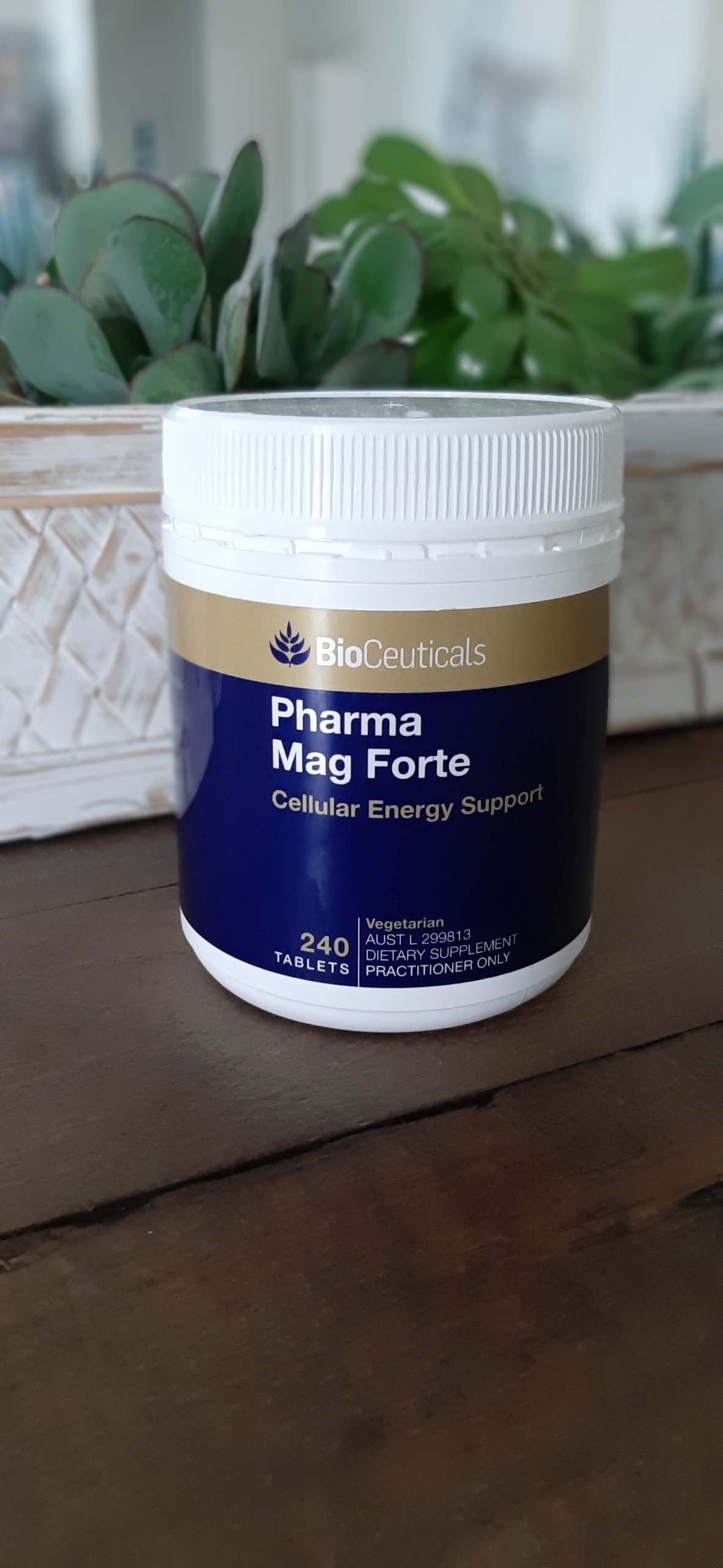If you have ever had a massage with me you would have most likely had me ask you if you are taking any supplements which often leads into a discussion on how you might want to think about using magnesium.
Magnesium is a mineral that is a vital micronutrient required by your body for life. The first part of that sentence you need to understand is the work micronutrient. The idea of micro can often be confused with not important. But not in the case of micronutrients. These substances are extremely important but only required by the body in small, or micro, amounts. The second part of the sentence to understand is – required by your body for life. This is not being melodramatic it is accurate. If you did not have magnesium in your body, you would die. Simple as that. Severe depletion in magnesium can lead to heart rhythm disturbances and sudden death.
This kind of depletion is rare, but general magnesium depletion is quite common.
Some signs of magnesium depletion are –
- Muscle twitches and cramps. If this is something you suffer from don’t forget to rule out excessive caffeine consumption or elevated stress levels. Also, some twitches are completely normal.
- This condition can be linked to many things such as low vitamin D and K levels, older age, and lack of exercise. However, it can also be a result of low levels of magnesium. This is because when magnesium is low calcium levels in the blood are lowered, and as most of us know calcium is the building block of bones.
- Fatigue and muscle weakness. General fatigue is absolutely normal and often indicates a need to rest! However, when it is persistent and combined with other symptoms it may indicate a need for more magnesium.
- Irregular heartbeats. This often has no symptoms but can present as shortness of breath and heart palpitations. Ensure you discuss these symptoms with your doctor. Magnesium supplementation MAY be indicated.
So, how do you make sure you are getting enough magnesium?
There are several ways to increase your magnesium levels. But before you rush out and buy a bunch of food and supplements, I highly recommend you ask your doctor for a blood test to check your actual levels. And if you feel that you have any of the symptoms mentioned above make sure you mention them to your doctor too!
How much magnesium do you need?
Adult males aged 19 and older require 410 to 420 mg, while women routinely only need 310 to 320 mg. The one exception is during pregnancy and breastfeeding when women should adjust their magnesium intake to between 360 and 400 mg daily.
Food sources of magnesium –
These are based on 100g amounts.
- Almonds 270mg
- Pumpkin seeds 262mg
- Dark chocolate 176mg
- Peanuts 168mg
- Popcorn 151mg
Other sources include flaxseeds, sunflower seeds, chia seeds, cocoa, coffee, cashew nuts, hazelnuts, and oats. Try to include magnesium-rich foods in your diet every day if you are deficient.
Supplements –
 My preferred oral supplement is from Bioceuticals, as pictured. This is a practitioner-only brand that is readily available from most pharmacies. I always recommend practitioner only brands as they are far superior in quality and are more bio-available in the body. This means they are more easily absorbed. Magnesium comes in many forms and some of them, usually the cheaper forms, cannot be absorbed.
My preferred oral supplement is from Bioceuticals, as pictured. This is a practitioner-only brand that is readily available from most pharmacies. I always recommend practitioner only brands as they are far superior in quality and are more bio-available in the body. This means they are more easily absorbed. Magnesium comes in many forms and some of them, usually the cheaper forms, cannot be absorbed.
You won’t find the practitioner only brands on the shelf, you will need to ask the pharmacist as they are generally kept with the prescription drugs.
Another way of adding to your daily magnesium levels is by using a magnesium spray or cream. This form of magnesium delivery is very efficient. The skin is the body’s largest organ and by spraying or massaging magnesium directly onto the skin it will be absorbed through the skin and used as necessary. I personally use and recommend Bare Body Beauty’s Magic Magnesium spray as pictured. I love to use it on sore muscles after a workout, and I often recommend it to clients that suffer from nightly leg cramps. I suggest they spray it on the soles of their feet as they hop into bed. This has produced GREAT results and much better-quality sleep.
Lastly, a great way of increasing magnesium, especially if you are suffering from muscle soreness, tightness, and cramps, is to soak in a magnesium salt bath. You can do this with Epsom salt or go for a higher quality magnesium flake. Ensure you use enough to make a difference by dissolving PLENTY into your bath. This is also a great way to keep your muscles a little less tight between massage appointments.
Alternatively, you could go for the ultimate in magnesium baths by booking a session in a specially designed floatation tank. We are lucky enough to have one locally here on the South Coast with Coastal Float in Kiama.
As you may have guessed by now I feel that magnesium supplementation is something that almost all of us can benefit from. Overdosing on magnesium is rare, but if you do overdo it, it will generally result in stomach aches and cramps and possibly diarrhea and nausea.
If you have any questions, I would love to answer them. Please message me or book in for a massage and we can discuss them in person!


